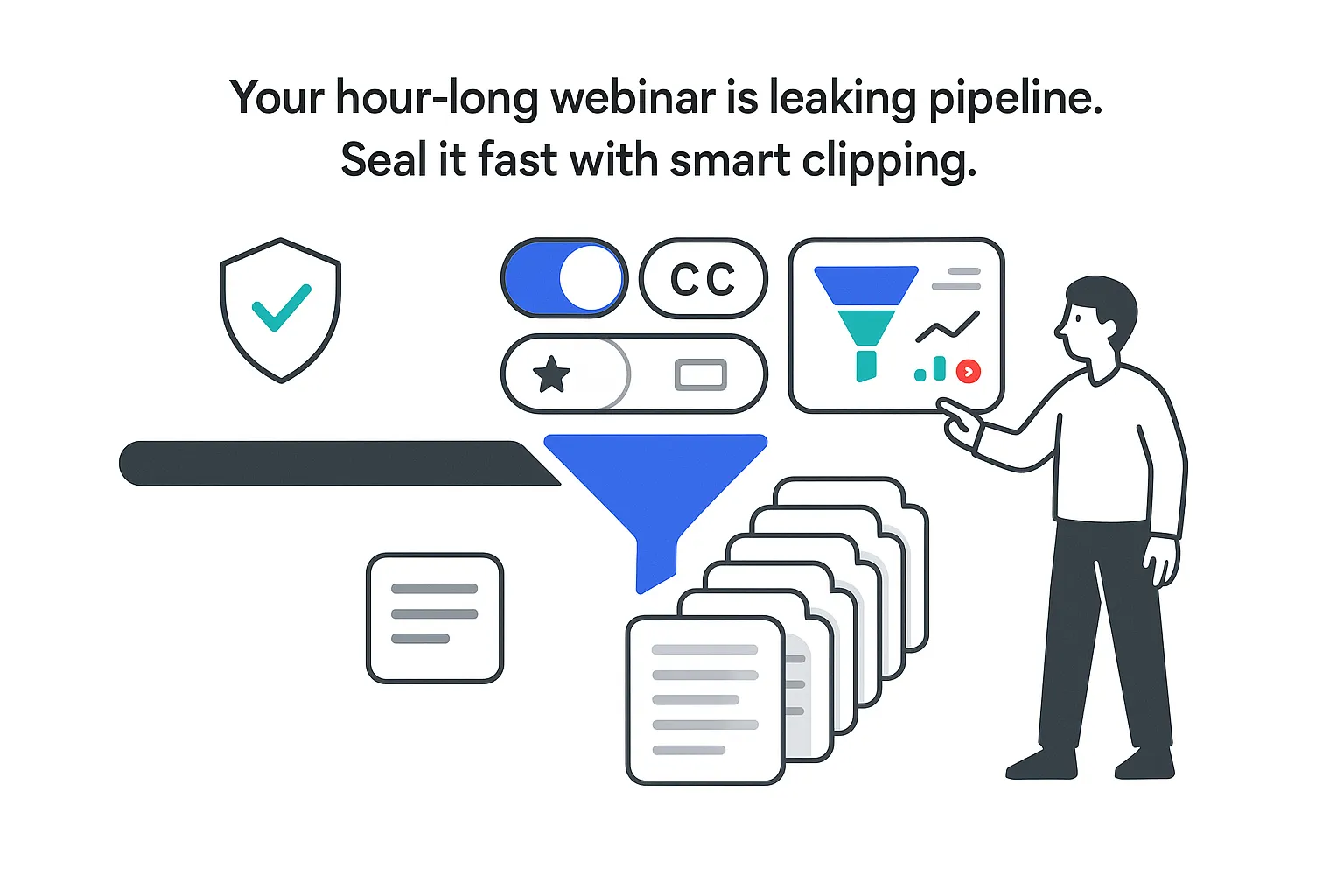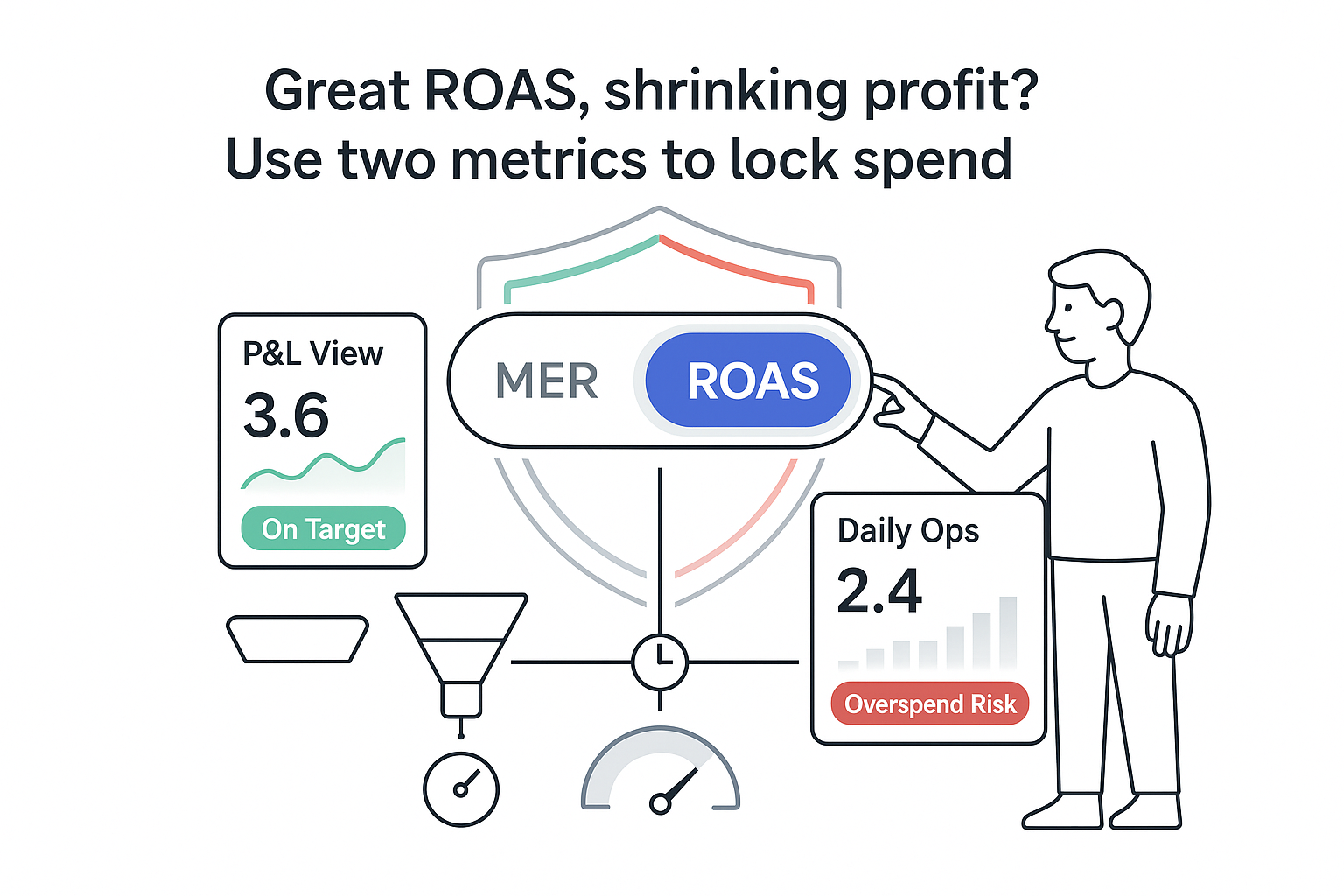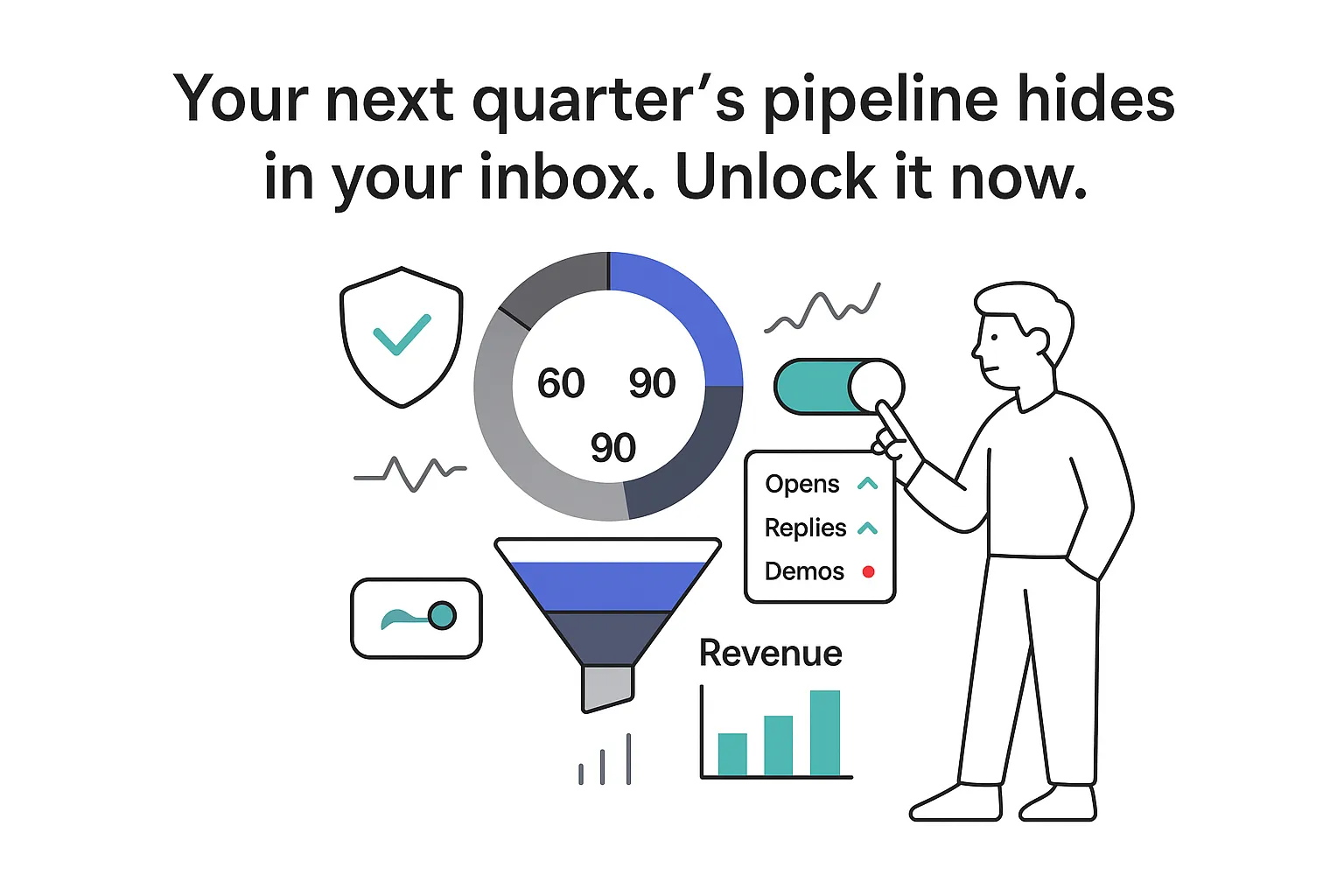Why short-form clips matter for B2B services
If you run a B2B service business and your marketing library keeps growing while your calendar keeps filling, you are not alone. Webinars, podcasts, product walkthroughs, founder talks, customer interviews - these are gold but time consuming. I use an AI clipping approach to turn that backlog into a steady stream of short videos people actually watch, share, and comment on. The goal is simple: less waiting, less manual work, more reach without adding headcount. It can sound too good. Then you watch ten to twenty ready-to-post clips appear in minutes, and the case starts to make itself.
Founders want a pipeline story, not just a content story. The value is taking one hour of long-form content and turning it into a week of social posts across LinkedIn, YouTube Shorts, and TikTok with brand-safe captions and subtitles. When posting is consistent and the topics map to buyer pains, I commonly see hours saved per asset and a lift in meetings booked. Your mileage will vary by audience quality, channel fit, and how strong your hooks are.
What AI clipping actually does
At its core, AI clipping identifies quotable moments, pulls segments, and wraps them with your brand. I import recordings from the tools teams already use - Zoom, Riverside, YouTube, Google Drive, or Dropbox - and export to the channels that actually matter for B2B growth: LinkedIn company and personal profiles, YouTube Shorts, TikTok, and MP4 for your site. Square, vertical, or widescreen formats can be handled automatically so the speaker stays centered, captions are legible, and nothing hides under platform UI.
Keeping the brand consistent matters more than people expect. A basic brand kit - logos, fonts, color palette, lower thirds - means every clip respects your look and feel. Team workspaces with clear permissions and audit trails make approvals traceable: who imported, who edited, who approved, and when. That paper trail saves time when compliance asks for receipts.
The math that connects edits to pipeline
The math most CEOs like is straightforward. If you reclaim four to six editing hours per session and reinvest that time into outreach or product, you compress time to revenue while keeping costs steady. I’ve seen one hour of content produce a dozen clips in thirty to sixty minutes of review time, versus four to eight hours manually across clipping, titling, captions, and formatting.
That promise rests on two assumptions I make explicit:
- The source content is genuinely useful to your buyer (not internal updates).
- Posting stays consistent for at least a month so the audience sees a pattern.
If either is missing, clip count rises but outcomes don’t.
Governance and brand safety from day one
Security and compliance matter, especially if you sell to enterprise. I look for independent audits and clear data handling: SOC 2-style controls, ISO-aligned practices, SSO, role-based access, and data retention settings I can control. This is not a nice-to-have if contracts require it.
A few guardrails keep legal headaches away:
- Avoid using customer names or logos without documented consent.
- Remove sensitive details in support or coaching calls before publishing.
- Keep financial figures general unless you have approval to share specifics.
- Add a short legal line to the last second of each clip as a default.
Podcast and audio: turning conversations into clips
Audio still punches above its weight in B2B thought leadership. With podcast clipping, I typically turn a 30-minute conversation into six to eight branded soundbites. Good systems detect quotable moments, identify speakers, and suggest hook lines that pull people in within the first two seconds. Captions, waveforms, and branded overlays help each clip feel native to its platform. If podcasts are your core format, try a dedicated Podcast Clip Maker to speed up the process.
Crafting clips people finish and share
Three quick principles make short B2B clips stronger:
- Lead with a hook. Start with a bold claim or a pointed question your buyer cares about.
- Pain then solution. Frame the problem in the first sentence, then move to your approach.
- Proof seals the deal. Add a metric, a short example, or an observed pattern before the last second.
Bonus: keep the logo subtle, add subtitles by default, and include a short headline bar with the core topic so the clip reads well on mute.
A simple end-to-end workflow
Here is how I map the process, start to finish:
- Ingest long-form content from Zoom, Riverside, YouTube, or a drive folder.
- Let AI detect topics, segment the timeline, and suggest hooks and titles.
- Auto-generate captions and apply your brand kit to maintain consistency.
- Have a human review the top picks, nudge a few words, trim a second here and there.
- Batch export with presets for LinkedIn, YouTube Shorts, and TikTok, or save MP4s for your site.
Time comparison helps this click. Manual editing of one hour of content often takes four to eight hours across steps. With AI-assisted clipping and a human pass, thirty to sixty minutes can be enough to move from upload to a dozen polished clips.
B2B needs a LinkedIn-first preset: thoughtful hooks, clear subtitles, square or vertical framing that reads well on mute. I also repurpose clips by embedding them in related blog posts or case studies. Rich media can increase dwell time, which often correlates with better organic performance. Keep clips snackable and link to a full post or resource for depth.
Formats that fit each channel
Recommended clip length and framing:
- LinkedIn: 30-90 seconds, square or vertical, subtitles on, headline bar with a clear theme.
- YouTube Shorts: up to 60 seconds, vertical, start strong in the first two seconds, end with a clean cutoff.
- TikTok: 15-30 seconds, vertical, fast first line, visual emphasis on one idea.
Aspect ratios to keep handy: 1:1 for LinkedIn feeds, 9:16 for Shorts and TikTok, 16:9 for your site or YouTube long form. Good tooling will resize and reposition so the speaker stays centered and key captions avoid platform UI.
A word on compliance. If customer references are part of the story, get explicit consent. Consider anonymizing customer coaching clips for public posts and using non-identifiable details unless approvals are on file.
Realistic outcomes, pitfalls, and examples
B2B teams in SaaS, IT services, and consulting tend to use this approach because it turns expertise into reach at a fraction of the old manual cost. I’ve seen ranges like a 50-70% reduction in editing time per episode and a 2-3x lift in LinkedIn reach within several weeks of consistent posting. Sometimes demo requests rise and appear to come from video posts that teach, not tease. Treat these as directional, not guarantees; audience fit and message quality drive the variance.
Two short case stories that reflect common patterns:
- A services firm turned a quarterly webinar series into forty-eight social clips and saw a steady uptick in direct messages from mid-market buyers. The editing queue that once took weeks moved in a day.
- A SaaS product team clipped customer coaching calls into anonymized insights for public posts. Those posts drove higher watch time and led to deeper questions in discovery.
Pitfalls to avoid:
- Volume over value. Ten weak clips won’t beat three strong ones anchored to buyer pain.
- Channel mismatch. If your ICP lives on LinkedIn, TikTok may be a low-yield priority.
- No rep enablement. Share the best clips with reps and give context on when to use them.
What I keep hearing from decision makers:
- CEO, IT services: weekly clips turned quiet weeks into inbound weeks; more intro meetings without higher ad spend.
- CMO, B2B SaaS: editing time fell by more than half, and subject matter experts finally posted consistently; content felt useful, not fluffy.
- Head of Sales, consulting: turning win stories into short clips gave reps new reasons to follow up; pipeline influenced by video showed clear movement.
Rollout, measurement, and next steps
When teams roll this out, I usually see two workable models: a self-serve approach where templates and presets let people operate on day one, or a hybrid approach where an editor sets the brand kit, imports the back catalog, and then the team takes over. Choose based on bandwidth and how fast you want the first week of results, not on feature lists.
Typical timeline when momentum matters:
- First clips within 24-48 hours of connecting sources.
- A clean brand kit in the first week.
- A posting rhythm by week two.
- A noticeable lift in reach and comments by week four if you post three to five clips per week.
Metrics I track so content ties to pipeline:
- Watch time per clip, save rate, and replies from target accounts.
- Posting consistency (clips per week) and percent of posts with complete captions and hooks.
- Meetings that reference a specific clip, by stage (discovery, demo, proposal).
- Lift in direct traffic and branded search during consistent posting periods.
To attribute impact simply, I tag links in post comments, collect “how did you hear about us?” responses, and note when prospects mention specific topics from clips. Over time, I compare periods with and without consistent clips to isolate effects.
Further reading topics that pair well with an AI clipping approach:
- LinkedIn video hooks that book meetings: why the first two seconds decide outcomes, with examples for founders, product leaders, and solution consultants.
- Webinar to Shorts workflow: a simple process that turns monthly webinars into weekly YouTube Shorts and social clips without burning out your team.
- Measuring pipeline from short-form video: a practical guide to tracking how clips influence discovery, demo, and close, with a basic attribution model and a simple dashboard layout.
Schema suggestion for BlogPosting on each related article page: include headline, description, author, datePublished, image, and a VideoObject when a clip is embedded. Keep titles under 60 characters and descriptions around 150 characters so they read well in search and on social.
A final thought for founders who crave clarity: consistency beats bursts. Your voice, every week, in formats your market already consumes. An AI clipping approach is not magic; it is a practical way to turn hard-won expertise into momentum you can measure. Your team stays focused. Your feed stays active. Your pipeline starts to feel a little easier. And that is the point.







.svg)